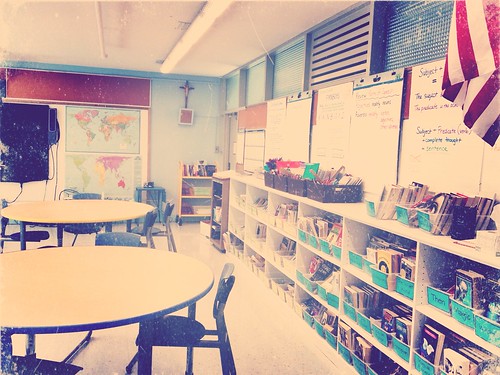This year my students will be learning about The Coolest Place You've Never Heard Of. At least, that's what I call the project in my mind.
When I started memorizing all the countries two years ago, I realized that there are many (many many) places on this planet that I had never even heard of. Many are islands, some still governed by a European nation. Others are independent. I wanted my students to learn about these places, but I didn't find a way to approach the subject last year.
Fast forward a year. I've been reading Chris Lehman's Energize Research Reading and Writing. We have an open house for families at the end of January. I'm a bit between revolutions in history. Why not spend some time researching a cool place and turn it into something to share with families in January? (By the way, it was 2 degrees when I started writing this. Just writing about January makes me colder.)
On Wednesday we started thinking about places. It was, coincidentally, another open house, this time for prospective families, so we had our doors open for visitors. I took my idea for this straight from Chris's book. On some chart paper on our easel, I put a simple 3-column chart. I wrote "I know", and then "a lot", "some", and "a little" at the top of each column. I asked students to open to a double-page spread in their social studies notebooks, and to copy the chart on the left page.
Meanwhile, I made my own chart on the SmartBoard. After a minute, I asked them to put down their pencils, and I started filling in my chart. I used it two different ways, both to lists several different places and also to think about what I knew and didn't know about specific places. I gave students five minutes and told them to fill in their thinking sheets as it worked for them.
After five minutes, I asked them to pick one of their places, and write about it quickly on the right page. What do you know? What do you want to know? When you exhaust one topic, either draw a line and pick another one, or go back to your chart if writing has sparked your thinking. I gave them ten minutes to go back and forth between the two pages, and suggested they have 2-3 quick pieces at the end of that time.
When time was up (I let the activity go until everyone had at least two quick writes), I asked them to jot down a list of places that they were curious about after thinking about places. It could be a region or a specific place. At this point I let students spend time looking at the maps on our walls, so they gathered and started pointed out interesting places to each other.
I realized partway through the second class that it would be helpful to refine the statement at the top of the page to "Places I know (a lot, some, a little) about." It's something to remember next time.
I'm not sure where this project will take us. I've told students that I want them to become experts about a place. Some will hunt out the most obscure place possible, and others are curious about places of current significance. The student in the photo above wants to learn about "places of war", names that we have heard on the news but know nothing about. I love that idea.
At this point, I'd like students to have a general idea for their place (or a few contenders) before they leave on break. I won't assign anything specific for this project over the vacation, but I pointed out that most of us have at least one day over break when we're bored enough to do homework. Why not spend it looking up obscure parts of the world on Google Earth?
And if you haven't yet read Chris Lehman's Energize Research Reading and Writing, I highly recommend it. The thinking sheet and writing we did came straight from the book. I'm still in the early chapters, and it's already changing my classroom.











